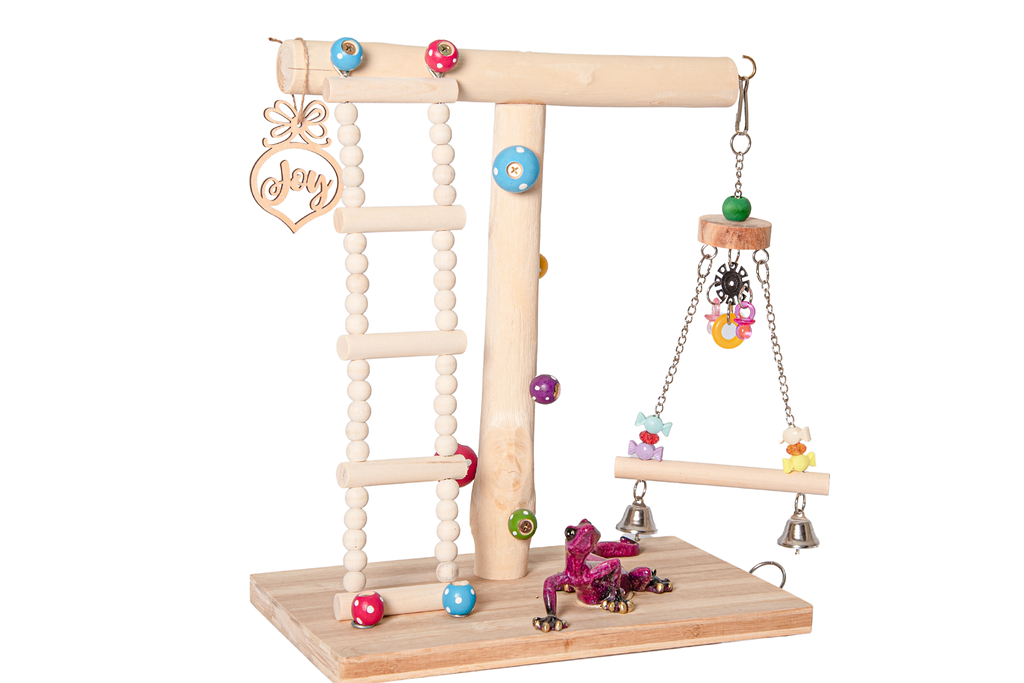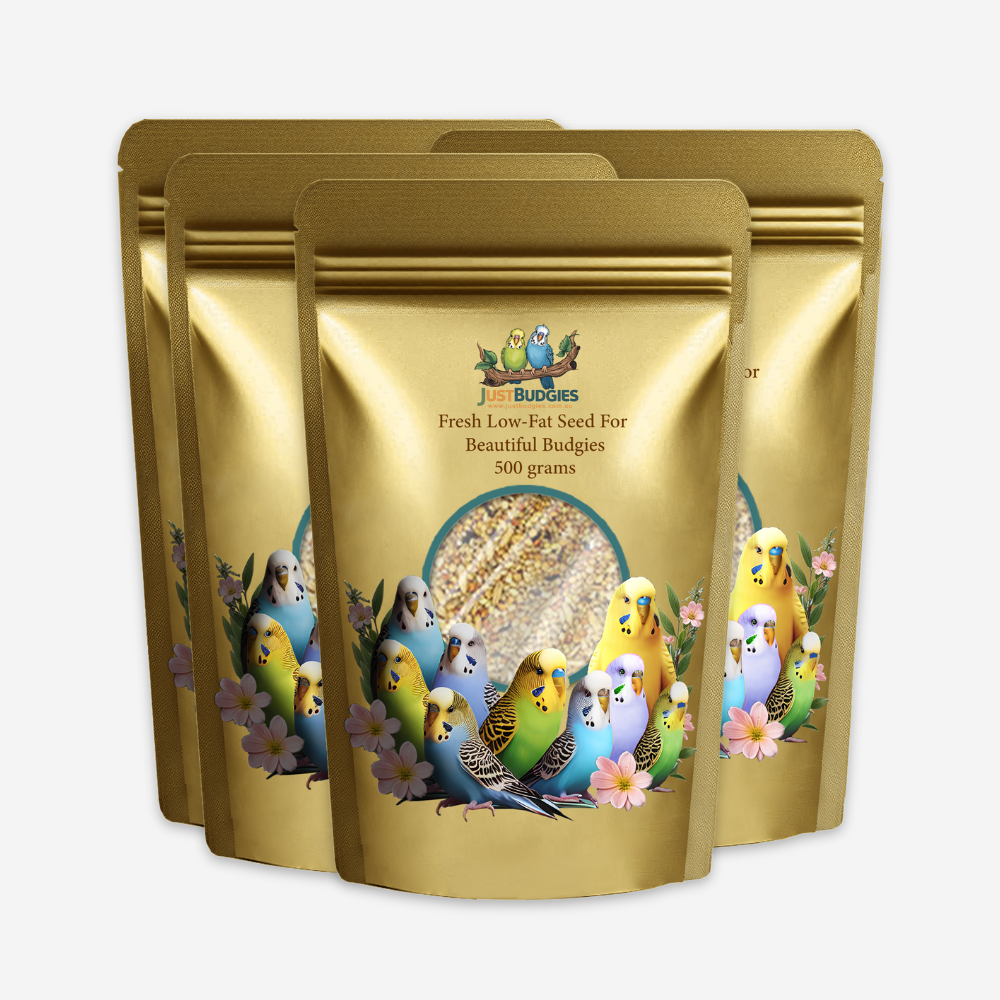Key Excerpts from RSPCA Guidelines (Australia) (In black)
Just Budgies – The Home Of Hand Tame Budgies In Australia Has Added Their Recommendations (In blue)
- One Budgie Or Two?
The RSPCA strongly recommends keeping budgies in compatible pairs or groups, as they are highly social flock animals in their natural environment. They should ideally never be kept alone. This is why the RSPCA recommends multiple budgies…
- Social Needs are Essential: Budgies have evolved to live in flocks, and social contact with their own kind is vital for their well-being. A solitary life is considered an "evolutionary aberration" and can lead to loneliness and negative health impacts.
- Natural Behaviors: Keeping budgies in pairs or groups allows them to engage in natural, essential behaviors such as mutual preening, chattering, and forming emotional bonds, which they cannot do with a single human companion.
- Better Welfare and Confidence: When a bird's social needs are met, it tends to be more confident, relaxed, and interactive, including with its human family.
- Human Interaction is Not a Replacement: While pet birds often consider their human family as part of their "flock," this does not fully replace the need for an avian companion. If a single bird does not receive sufficient daily attention, it may develop behavioral issues.
- Taking a budgie from a flock environment and placing it in an isolated, solitary situation is a considerable shock; some make the transition, many do not, and lifespan appears to be significantly shortened as a result. Be kind, follow your heart and do the right thing. Always buy at least two.
Gender Dynamics:
- A male and female pair usually live amicably, provided steps are taken to prevent unwanted breeding (e.g., ensuring no nesting boxes are available).
- Males generally get along well with each other.
- Females can also cohabit happily, but it's not recommended to keep only females, as they can sometimes be more territorial, especially during breeding season.
- A male and female are usually the best combination, and the romance is charming. Two boys are also good, and two young females can often work well, though we do not recommend putting only two mature girls (over 6 months old) together.
- Provide as Much Space as Possible
- Use as large a cage or aviary as you can afford and fit - bigger is better. (We recommend a minimum 60cm wide cage, but 76cm is preferable. Alternatively, the 60cm wide Heavy-Duty Aviary cage is ideal.
- If birds are permanently caged, they should have regular access to a flight aviary or time outside in a bird-safe space. (Budgies should be out every day if possible, in a space they know well).
- The cage must allow natural behaviors: grooming, playing, and flying /hopping.
- Cage Dimensions & Structure
- Minimum cage size: The bird must be able to stretch its wings fully without touching the sides. (We recommend a minimum perch length of 60cm and the Prince or Princess cages are ideal).
- For more than one bird, RSPCA recommends a cage width that is three times their combined wingspans. (The 76cm wide King or Queen cage is ideal).
- Length: Enough space so there are “at least two wing beats between perches” — so they can fly/hop side to side.
- Height: At least three times the length from the bird’s head to tail (for the biggest bird in the enclosure).
- Mesh / Bar Size
- For small birds like budgies (20–80g), use mesh of ~12 × 12 mm, with wire thickness ~0.7–0.8 mm. (All our cages have 11-12mm bar spacing).
- Good ventilation is essential: At least half of the largest side of the cage should be open mesh, not solid. (All our cages have open sides all round).
- But still protect from draughts (gusts of strong wind) and fumes.
- Cage Placement
- Place indoors in a quiet, safe corner, not high-traffic areas. Birds can get stressed by constant human or pet noise (e.g., cats and dogs).
- Avoid placing cage near toxins: e.g. fumes from cleaning products, paint, incense, cigarette smoke.
- The cage stand should be stable and, ideally, mobile so you can reposition it if needed. (All our cages have stable stands on wheels – hanging cages are not recommended).
- Outdoor Aviary Guidelines (if used)
- Provide shelter: If the aviary is outdoors, at least 1/3 of the total area (roof + walls) should be solid or weather-protected. (Shade and shelter must be available at all times).
- At least ¾ of one wall should be mesh so birds can see out and get ventilation. (And, preferably double meshed so that wild predatory birds cannot attack).
- Ensure protection from predators, as well as wind, rain, and direct sun. (There should be a solid base to the aviary with the frame or wire very firmly fixed into the concrete to avoid rats, mice and snakes from entering).
- Mental Enrichment
- Birds are highly intelligent - they need toys, perches, and stimulation. RSPCA emphasises giving them the ability to express normal behaviours like playing, climbing, and grooming. (An excellent selection is available from Just Budgies, and if you buy your seed here in eight packs at a time, you get new free toys with every delivery.)
- Use different types of perches (natural branches are good) so their feet don’t get sore, and they can exercise. (Ensure that you have different diameter perches, main perches, swings, ladders etc. all different diameters. Natural climbing mats are also ideal).
- Protection from Noise and Predators
- Avoid loud, sudden noises. Birds can be stressed by the presence of predators (cats, dogs) or by constant commotion.
- The cage should provide a “safe corner”: ideally, two sides are more closed so the bird feels more secure. (If the back is against the wall or the cage is in a corner, that helps budgies feel safe).
- Cleaning and Hygiene
- Use materials that are easy to clean (impervious surfaces). (Natural branches can be difficult to clean so be prepared to change them frequently if natural branches are used).
- Keep the floor clean; remove droppings and change substrate/tray regularly. (Though RSPCA doesn’t always prescribe the exact substrate, cleaning is emphasised, paper sheet is ideal in the bottom tray under the wire, white paper is perfect as you can keep an eye on the poop to detect any abnormal changes).
- Avoid placing perches directly over food/water bowls so droppings don’t contaminate them. (This is a typical recommendation in codes of practice.)
- Sleep / Day-Night Cycle
- Birds need a regular diurnal (day-night) rhythm. Having a “night cage” or covering the cage at night can help them feel secure. (It also encourages them to sleep in in the mornings to give owners more chatter-free time).
- Avoid draughts when they sleep (especially at night).
Things to Keep in Mind
- These are minimum / recommended standards — aiming higher (bigger cage, more enrichment) is always better for welfare.
- If you are keeping more than one budgie, you need to scale up space, enrichment, and perches appropriately.
Compliant cages, playgrounds, accessories and seeds and the best selection of hand-tame budgies is available from Just Budgies at Whispering Pines Aviary at 31 Pinetree Court Mudgeeraba Qld 4213
Tel: 0412 993 334
Email Garry@JustBudgies.com.au
Website: http://www.justbudgies.com.au
Facebook: https://www.facebook.com/JustBudgiesQLD
(Click on the Facebook link and ‘FOLLOW’ to stay up to date with all the latest budgie information and news.






